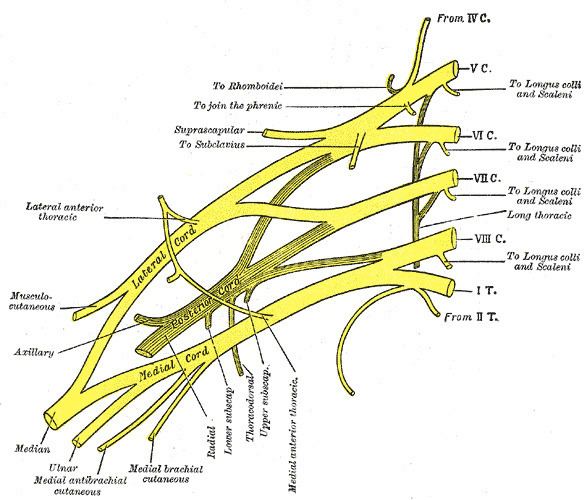The medial cord is a division of the brachial plexus.
The medial cord gives rise to the following nerves:
The medial pectoral nerve, C8 and T1, to the pectoralis muscleThe medial brachial cutaneous nerve, T1The medial antebrachial cutaneous nerve, C8 and T1The median nerve, partly. The other part comes from the lateral cord. C7, C8 and T1 nerve roots. The first branch of the median nerve is to the pronator teres muscle, then the flexor carpi radialis, the palmaris longus and the flexor digitorum superficialis. The median nerve provides sensation to the anterior palm, the anterior thumb, index finger and middle finger. It is the nerve compressed in carpal tunnel syndrome.The ulnar nerve originates in nerve roots C7, C8 and T1. It provides sensation to the ring and pinky fingers. It innervates the flexor carpi ulnaris muscle, the flexor digitorum profundus muscle to the ring and pinky fingers, and the intrinsic muscles of the hand (the interosseous muscle, the lumbrical muscles and the flexor pollicus brevis muscle). This nerve traverses a groove on the elbow called the cubital tunnel, bordering on the medial epicondyle of the humerus also known as the funny bone. Striking the nerve at this point produces an unpleasant sensation in the ring and little fingers.
